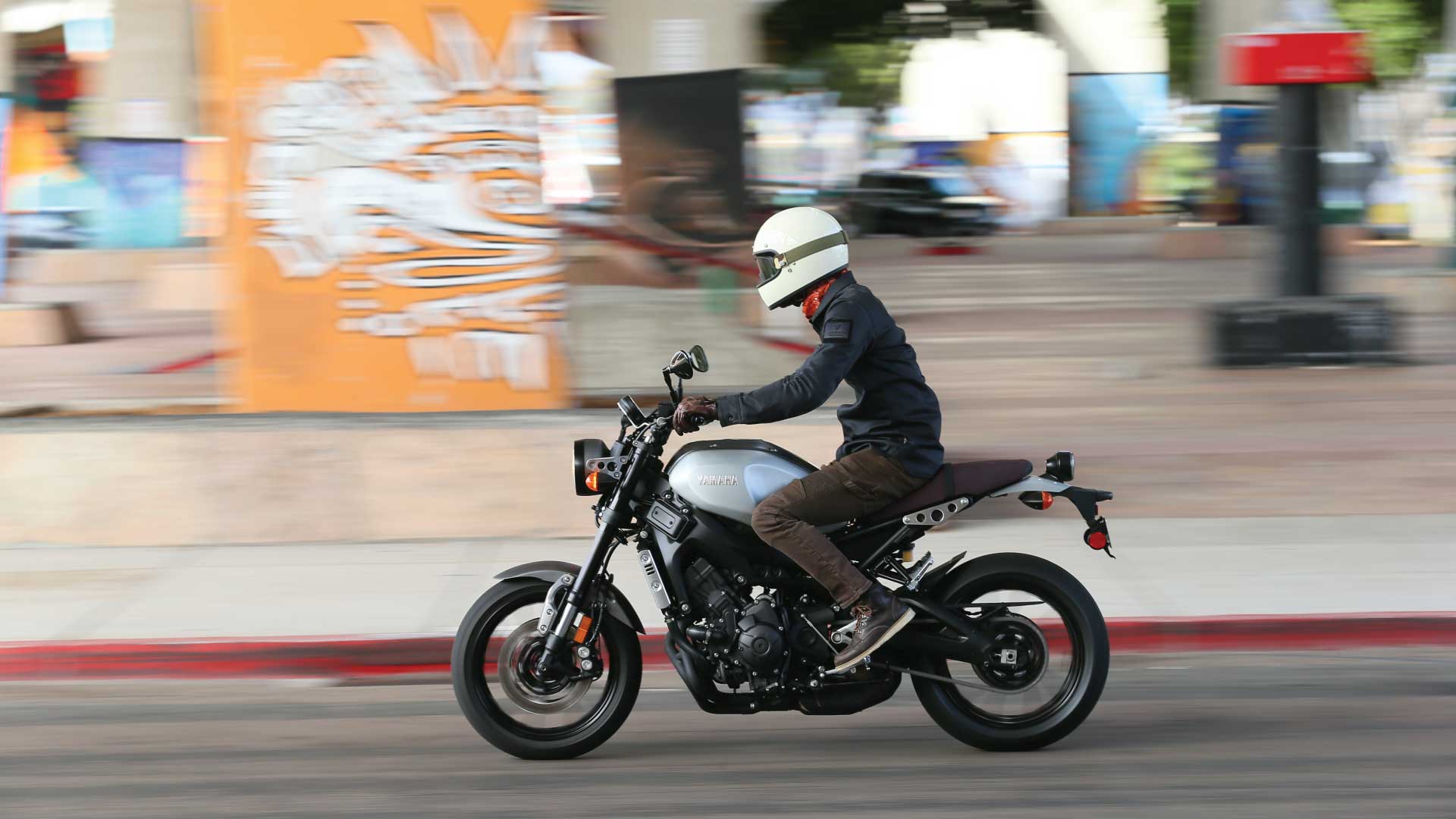

We may earn revenue from the products available on this page and participate in affiliate programs. Learn more ›
It wasn’t long before the three of us separated ourselves a bit from the rest of the pack. Not that it was intentional; we weren’t trying to be “that guy.” But the bike asked for it. Begged for it. It needed to go faster.
A good bike releases your focus from what it’s doing beneath you. It lets you focus on the next apex, the next corner exit. It turns 25 mile per hour turns into 40 mile per hour ones. Then into 60 mile per hour ones.
And this was exactly the predicament I found myself in on the launch of the new Yamaha XSR900. Yamaha’s marketing effort told me I was there to ride a hipster/retro/stylish bike. But Yamaha’s marketing was wrong. Very wrong. So, while I had every intention of staying with the group, the bike just wouldn’t allow it.

The XSR900 is built around the same three-cylinder, 847 cc motor from the Yamaha FZ-09. At 115 horsepower, a well distributed 65 pound-feet of torque, and 430 pounds – the XSR is nothing short of shockingly fast. Power starts off strong enough to loft the front wheel easily, and it only gets stronger through the rev range. To help control all that thrust, the XSR keeps the riding modes from the FZ-09, then adds traction control, a slipper clutch, and ABS.
The beauty of this triple is its power delivery. Unlike a four cylinder, it makes 90% of its peak torque all the way down at 2,500 rpm. And, unlike twins, that power doesn’t drop off, pulling all the way until 10,000 rpm. The real hit comes at about 7,500 and doesn’t fade. It feels like the power will never end, instead of like you’re searching for it.
The FZ-09, the sport naked with which the XSR900 is based, wooed us in similar fashion. But it was riddled with problems; from poor fueling to snatchy on/off throttle transitions, to terrible suspension. It made incredible power too, but the bucking and yawing that came with any throttle input while at lean made it near impossible to use. Yamaha has a keen ability to listen to the motorcycle community, so it’s no surprise that Yamaha listened to our complaints and brought a much more refined setup for the XSR900.

The shorter, single rate springs from the FZ-09 were ditched in favor of a longer, dual-rate setup. Both rebound and compression damping, as well as fork oil levels, were increased to help slow and smooth fork movement.
The pogo-stick ness of the FZ is long gone, with the XSR900 providing a much stiffer ride. Among its platform mates, the FZ-09 and sport touring FJ-09, the XSR900 is billed as the “stylish” or “around town” version. Surprising then, that it’s at its best nailing apexes and its worst managing city streets.
Yamaha addressed the fueling issues of the triple by giving the XSR900 what they call “ECU settings to match the character of the bike.” The end result is on/off throttle transitions that are far more manageable, throttle application changes were smooth, and a “sport mode” is finally rideable. If you’re doing any real performance riding, you’ll still want to work on your own tune, but the stock fueling is just dandy for the masses.

The XSR900 is the Dr. Jekyll to the FZ-09’s Mr. Hyde. Better yet, it’s everything a naked bike should be.
It’s a big endorsement of the format. For years we’ve expected naked bikes to be one of two things: They could be stylish. Which so often means retro. Heavy, boring, and poorly equipped. Or they could be modern. Angular and geometric. A detuned version of a sportbike. An afterthought.

Yamaha’s success with the XSR900 doesn’t come from finding a perfect medium between style and capability, it comes from setting a new standard for both.

If anything, my only complaint with the XSR900 is that it’s too good. Too fast. Too capable. Unnecessarily excellent for commuters and city-goers. So fast and so capable, it will constantly ask you for more. More of what you can’t really give it in most riding environments. More speed. More lean angle. More of that front wheel riding high in the air.
At least, that’s what it asked of me.
